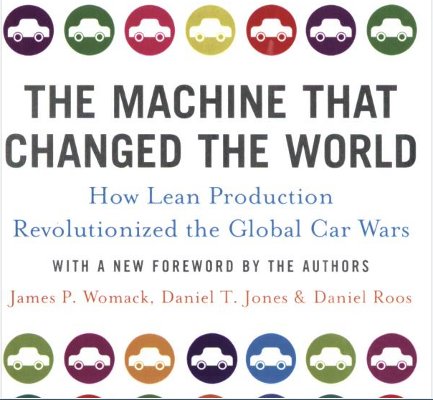“Lean” was first referred to in “The Machine That Changed the World” – a book written in the 1980s by a group of MIT researchers who had spent years studying the global automobile industry. It was used to describe management practices then being used at Toyota.
Rather than focus on individual parts of the process, Lean looks at smoothing flow through the entire process. The aim is to increase your output and improve the quality too. There are a number of ways to do this, including:
Pull processing
Imagine we’re on a production line. You are at the start of the line and you produce ‘widget A’; Bob next to you produces ‘widget B’; my job is to join widgets ‘A’ and ‘B’ together to make our product.
You are very fast and can produce 6 ‘A’ widgets per minute; Bob is slower and only produces 4 ‘B’ widgets per minute. I can join the two widgets together at the rate of about 4 per minute.
After an hour, I have produced 240 finished products. I also have an inventory of 120 ‘A’ widgets but no ‘B’ widgets. The pressure starts to build up and by lunchtime I have a surplus of about 500. You start to relax because you know I have enough ‘A’ widgets to keep me busy for the rest of the day; Bob and I are still working flat out. Then I pick up an ‘A’ widget and discover there is a problem: you’ve been given faulty raw materials and the all the remaining ‘A’ widgets that you produced don’t fit together with the ‘B’ widget. If it was a problem with Bob’s widget, we could easily solve that because he is going at the same speed as I am; but you’ve built up an inventory and we’re going to have to throw them away. Lean works on a ‘pull’ basis where supply is controlled and inventory is limited: basically, I ask you for more parts when I am running low and then, and only then, would you make more. An extensive inventory is not beneficial; in fact, it is counter-productive as it takes up space and might be thrown away if we find a problem or we stop needing ‘A’ widgets.
Waste minimisation
One of Lean’s core focuses is eliminating waste. Waste comes in many forms, such as undertaking work that does not add value to the end customer. Ask yourself: “would the customer be willing to pay for this activity? Does it deliver a change to the product (in terms of its form, fit or function) that makes the product more attractive to my customers?”. If the answer to these questions is “no” then you are being wasteful. Is there something else that you could do to add more value?
There are various forms of waste (all with Japanese names such as ‘muda’ – for the waste described above), but it can be confusing as some waste is beneficial.
Production flow and Visual control
Known in Japanese as ‘mieruka’, this is the use of visual cues to convey information quickly. It is this concept that Kanban is often known for, especially the employment of agile boards.
Perfect first-time quality
There’s quite a lot of debate that occurs from this concept: my understanding is that it means your quality is perfect, not that your product is necessarily perfect. Agile encourages frequent releases and incremental improvements, but a product can be partly completed but good quality. I have a problem with the concept of never releasing a product with a known bug; surely that’s a decision of the customer. Doesn’t it sometimes make sense to put an imperfect product live now, than wait for a ‘perfect’ version? Is there even such a thing as perfect?
Load levelling
Also known as ‘Heijunka’, this is the concept of balancing production against demand (according to the needs of your customers). Similar to the ‘pull’ concept above, but at the end of the process, you are only delivering products to your customers when they are pulling those products from you.
There are many other tools recommended such as building and maintaining long-term relationships with your customers (which Toyota did by investing in their suppliers as minor shareholders), automation and continuous improvement. I’d recommend a read of the book – you also get a short history of the automobile industry for free.
